The extensive and varied Special Collections held by the Library range from Colonial Era manuscripts, legal documents and publications through original photographic prints and glass plate negatives to illustrated and annotated early 18th and 19th century volumes, including literary first editions and art and children’s books.
These unique, fragile materials, while they provide broad and revealing views of the historical development of Lenox and the surrounding area, are not limited to regional interests. The presence and participation of significant figures such as Nathaniel Hawthorne, Edith Wharton, Andrew Carnegie, Leonard Bernstein and others in Lenox life and activities lend the Special Collections importance and value that transcend the Berkshires. As such, these materials are consulted by scholars, researchers and students from throughout the country. At the same time, the Special Collections are also heavily used by new and local residents seeking to gain a sense of place and understanding of their home.
For more information concerning these collections, please contact Local History Librarian Amy Lafave at alafave@lenoxlib.org

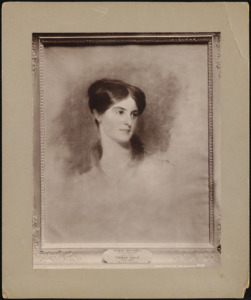 Famed British actress Frances Anne “Fanny” Kemble (1809-1893) was one of Lenox’s most celebrated residents. In her early 20s, she staged an American tour, where she would meet novelist Catharine Maria Sedgwick who introduced her to Lenox. She also met and married Pierce Butler in 1834; Butler would inherit several hundred enslaved persons on an island plantation off the coast of Georgia. When Fanny and Pierce divorced in 1849, Charles Sedgwick (Catharine’s brother) found her a home on the new county road which would subsequently be named in her honor, Kemble Street.
Famed British actress Frances Anne “Fanny” Kemble (1809-1893) was one of Lenox’s most celebrated residents. In her early 20s, she staged an American tour, where she would meet novelist Catharine Maria Sedgwick who introduced her to Lenox. She also met and married Pierce Butler in 1834; Butler would inherit several hundred enslaved persons on an island plantation off the coast of Georgia. When Fanny and Pierce divorced in 1849, Charles Sedgwick (Catharine’s brother) found her a home on the new county road which would subsequently be named in her honor, Kemble Street.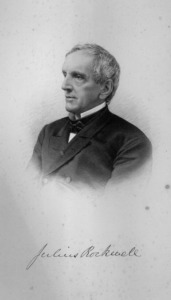 Judge Julius Rockwell (1805-1888) held political office in the Massachusetts House of Representatives and the U.S. House and Senate. Upon its organization in 1859, Rockwell was appointed to the superior court of Massachusetts. His wife Lucy was the daughter of Judge William Perrin Walker; his father, Judge William Walker, had served as a captain in the Revolutionary War. Rockwell’s brother-in-law was David Davis, campaign manager for Abraham Lincoln, who would appoint Davis to the Supreme Court.
Judge Julius Rockwell (1805-1888) held political office in the Massachusetts House of Representatives and the U.S. House and Senate. Upon its organization in 1859, Rockwell was appointed to the superior court of Massachusetts. His wife Lucy was the daughter of Judge William Perrin Walker; his father, Judge William Walker, had served as a captain in the Revolutionary War. Rockwell’s brother-in-law was David Davis, campaign manager for Abraham Lincoln, who would appoint Davis to the Supreme Court.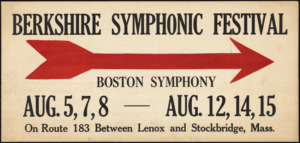 The Tanglewood Papers are historical papers documenting the pre-Tanglewood history of the Berkshire Symphonic Festival and the Berkshire Music Center, as well as the founding of Tanglewood and the building of its music pavilion – “The Shed.”
The Tanglewood Papers are historical papers documenting the pre-Tanglewood history of the Berkshire Symphonic Festival and the Berkshire Music Center, as well as the founding of Tanglewood and the building of its music pavilion – “The Shed.”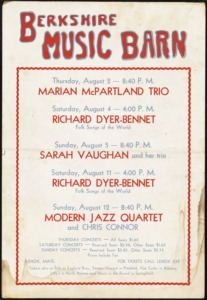 Founded in Lenox by Stephanie and Philip Barber, the Music Inn was a center of jazz performance and education from 1950 to 1960. The Barbers purchased part of the Wheatleigh estate to hold concerts and roundtable discussions. In 1957, the Barbers partnered with Modern Jazz Quartet pianist John Lewis to form the Lenox School of Jazz. The archives contain clipping scrapbooks, posters, brochures, course curricula, as well as reservation forms and menus for guests staying at the Music Inn.
Founded in Lenox by Stephanie and Philip Barber, the Music Inn was a center of jazz performance and education from 1950 to 1960. The Barbers purchased part of the Wheatleigh estate to hold concerts and roundtable discussions. In 1957, the Barbers partnered with Modern Jazz Quartet pianist John Lewis to form the Lenox School of Jazz. The archives contain clipping scrapbooks, posters, brochures, course curricula, as well as reservation forms and menus for guests staying at the Music Inn.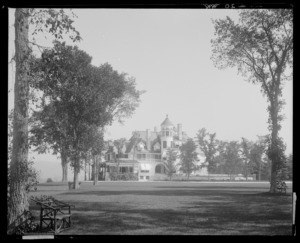 Edwin Hale Lincoln was born in Westminster, Massachusetts in 1848, the son of a Universalist minister. After serving in the Civil War as a drummer boy and a stint as a page in the Massachusetts House of Representatives, Lincoln went into the photographic business in Brockton in 1876. He pioneered photographing yachts under full sail in Newport, Rhode Island and became one of the first photographers to specialize in documenting large estates. He first visited Lenox in 1883 and moved permanently to the area in 1893, just as the Berkshire “Summer Cottages” were reaching their zenith. For the next several decades, Lincoln would capture in remarkable photographs not only the grandeur and scale of the estates but also their fragility and impermanence.
Edwin Hale Lincoln was born in Westminster, Massachusetts in 1848, the son of a Universalist minister. After serving in the Civil War as a drummer boy and a stint as a page in the Massachusetts House of Representatives, Lincoln went into the photographic business in Brockton in 1876. He pioneered photographing yachts under full sail in Newport, Rhode Island and became one of the first photographers to specialize in documenting large estates. He first visited Lenox in 1883 and moved permanently to the area in 1893, just as the Berkshire “Summer Cottages” were reaching their zenith. For the next several decades, Lincoln would capture in remarkable photographs not only the grandeur and scale of the estates but also their fragility and impermanence.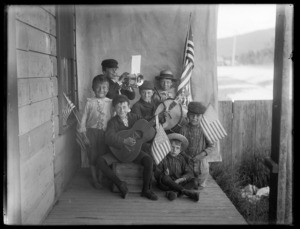 This collection contains more than 300 original prints dating from the earliest days of the use of the medium in the 19th century. Unlike the Lincoln Collection, the majority of these images capture the full dimensions of life in 19th Century Lenox, ranging from the wealthiest to the most ordinary inhabitants.
This collection contains more than 300 original prints dating from the earliest days of the use of the medium in the 19th century. Unlike the Lincoln Collection, the majority of these images capture the full dimensions of life in 19th Century Lenox, ranging from the wealthiest to the most ordinary inhabitants.